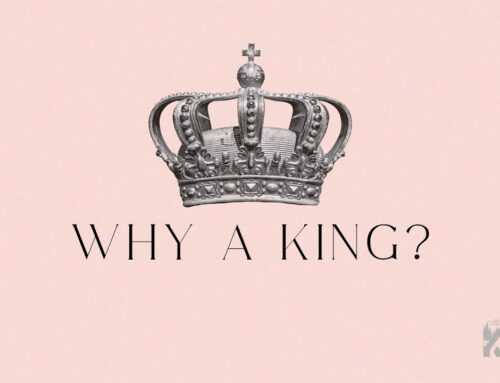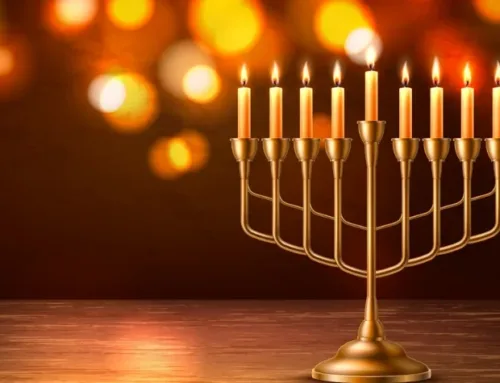Jules Konopinski obituary
Early member of the 43 Group founded by Jewish ex-servicemen to take on Oswald Mosley’s Blackshirts in the East End of London
Thursday, October 19, 2023
Reprinted from The Times [London]
Julius Konopinski, better known as Jules, was one of the few surviving members of the 43 Group, which was formed in April 1946 by Jewish ex-servicemen to resist the postwar aggression of Britain’s fascists and to keep them off the streets of East London.
Konopinski was 17 when he joined the group, by which time he had lost nine uncles and aunts in the Nazi death camps. “We Jews, all our lives, have been taught that if anyone spits at you, you walk away — that’s the teaching of the rabbis,” he later told an interviewer. “But there comes a time when you have to make a stand — and we made a stand. I’m very proud of what we did.”
Because of his eagerness to take on fascist thugs he earned the nickname “Mad Jules”. “There was a lot of violence in the East End, but it was justified,” he said. “I enjoy debating and discussing, but when you’re dealing with thugs, the rabble on the street, you can’t talk to them. We were defending our communities. It was a necessary defence.”
Sir Oswald Mosley had marched with his Blackshirts, members of the British Union of Fascists, before the war, culminating in the Battle of Cable Street with anti-fascist demonstrators in 1936. Mosley had been interned during the war and then came back to the East End after the war. In Ridley Road market, on Sunday evenings, hundreds would gather to hear him. Konopinski was arrested on Sunday March 7, 1948, at a Commonwealth Party meeting at Ridley Road and charged with threatening behaviour and possession of offensive weapons. He was carrying a razor blade in a metal holder, which he said he used in his job as a leather worker, and a screw-fitting light bulb, which he claimed to have found and which he thought “might come in useful” for domestic purposes (although the police said such bulbs were often thrown at political meetings). Konopinski was sent for trial at the Old Bailey on May 10 with six co-defendants. Some of the men were fined, but Konopinski was found not guilty and discharged.
After that he left the 43 Group for a year when he was recruited to fight in the Palmach, the military defence force of the Zionist movement, during the Israeli War of Independence. He trained secretly in England, without telling his parents of his intentions, and left for Marseilles in the summer of 1948. From there, he flew to Israel with his friend Vidal Sassoon, later to become world famous as a hairdresser.
On his return he resumed his duties with the 43 Group, which continued until 1950, when Mosley retired to France and the resurgent English fascists became demoralised.
In 2021, together with two other 43 Group veterans, Konopinski met Ivo Mosley, a direct descendant of Sir Oswald Mosley, at the screening of footage from a documentary about the 43 Group. Mosley told a Jewish Chronicle reporter at the screening that his grandfather was “a truly horrible man, who loved being unpleasant, with a very sadistic sense of humour. He was extremely vain, and power mad.”
Julius Hillel Konopinski was born in 1930, in Breslau (now Wroclaw), Silesia, which then belonged to Germany. His father, Issac, a Polish Jew, had been living in Germany since 1914, and served in the German army during the First World War. His mother, Tauba Kurland, had been living there since marrying Isaac in 1928. Isaac worked in the military headgear business and the family lived in Germany until 1938. They had been intending to emigrate to America, but because of an embargo they were unable to obtain visas.
In 1938, on the eve of Yom Kippur, his father was notified that he should attend the American delegation, as their paperwork had arrived. On the tram back home he was arrested for the offence of looking at an Aryan woman, and taken to the Gestapo headquarters, known as the Brown House, where he was questioned, abused and locked up. He managed to escape and made his way to the port of Kiel, thence to Denmark, and subsequently, in September 1938, he travelled from Denmark to London on a one-week visitor’s permit. After the permit had expired he went into hiding, otherwise he would have been sent back to Germany. For almost a year he hid in the basement of a house in Forest Gate, east London, with nobody knowing he was there.
Jules and his mother remained in Germany, unaware of whether Isaac was alive or dead. Eventually, Tauba received news from him as well as the instruction to join him in England. She attempted to sell the family property, which was only allowed if she sold to a member of the Nazi Party and for whatever price they offered. She was charged “Jew tax” on the proceeds, which was also applied to any money drawn from the bank. She took the family money and Julius to Poland, where they spent nine months trying to get out, which they finally did, on one of the last boats to leave Danzig (now Gdansk) for London, which was attacked in the English Channel.
Jules, who spoke German, Yiddish and some Polish, quickly learnt English — he was taught by nuns at a local convent school on condition that he learnt the catechism and Catholic prayers — and took the entrance exam for West Ham Secondary School, but he was told he was too good for that school and was advised to sit the entrance exam for Parmiter’s, a grammar school in Bethnal Green. Subjected to playground abuse, he stood in a crater in nearby Victoria Park every morning and fought off anyone who dared to insult him. When his family moved to Clapton he transferred to Hackney Downs School, where he matriculated at the age of 15 and helped a young Harold Pinter with his matriculation exams.
While at Parmiter’s, he and his Jewish contemporaries witnessed several antisemitic demonstrations and saw graffiti daubed on walls saying “Jews Out”, and they realised the prewar Mosleyites had been released from internment. The situation in London deteriorated to such an extent that in 1946 Jewish people in east London — Bethnal Green, Whitechapel, Aldgate, Hackney — were afraid to go out in the streets for fear of being attacked, and in August 1947 there were antisemitic riots in Manchester and Liverpool. Konopinski joined the 43 Group, which gathered intelligence about fascist meetings, exposed their activities, and stopped them selling fascist newspapers on street corners in Jewish areas. Its members also took the fight to the enemy, having been trained by ex-commandos, boxing coaches and karate instructors.
In 1950 the 43 Group was disbanded after various Jewish organisations, lawyers and parliamentarians decided that antisemitism was “under control”. However, in 1962 Konopinski saw that a banner had been unfurled in Trafalgar Square, 60ft long and 8ft high, saying “Free Britain from Jewish Control”. He informed his old comrades and the 62 Committee was founded to counteract Colin Jordan and his National Socialist Movement.
Konopinski remained a member of the 62 until it closed in 1975. Mosley continued to attend fascist rallies in the 1960s and Konopinski was part of a group of 62 members who got close enough on one occasion to kick the fascist firebrand in the knees, knowing that he suffered from phlebitis.
After the Second World War, his father Isaac had resumed his work with military headgear and as one of the few people able to service the bearskins for coronations he was given a seat on Horse Guards Parade for the Coronation in 1953.
Jules, who had gone into the leather goods business as an apprentice, opened a shop in Victoria, which sold handbags and briefcases and did repair work. In 1956 he married Eleanor King, whose parents had a leather goods business in Sutton. They had their first daughter in 1958.
In the late 1940s Konopinski became active in the Jewish subculture of schmeissing, a massage therapy that became popular in steam baths across London. He had accompanied his father to the Hackney Baths and started going to the Porchester Baths in Queensway, west London, aged 18. For many London Jews of his generation, schmeissing was as important as attending synagogue. Men arranged family holidays to coincide with the baths’ closure for cleaning and repairs and if one of their fraternity got married there was always a table at the reception for lads from the baths. Konopinski was still attending the Porchester until six months before he died.
He was 63 when his wife died in 1993 and he closed his leathergoods shop in 1995. During the last 20 years of his life he underwent treatment for three cancers, suffered two heart attacks and had a pacemaker fitted. He is survived by his younger brother Lennard; by Valerie, his partner of 27 years, a former fashion retailer; and by his two daughters: Carolyne, who worked in fashion, and Michele, who worked in recruitment and is now a fitness and zumba instructor.
Konopinski was an enthusiastic freemason. A masonic lodge called Metallus was born at the Porchester Baths. Apart from Metallus, Konopinski belonged to the Mandate, Attainment and Chapter lodges, and he received an award for 50 years of service to freemasonry. If there had been an award for fighting fascists he would no doubt have won that too, because he had been doing it all his life.
Jules Konopinski, anti-fascist fighter, was born on February 18, 1930. He died of a brain tumour on July 16, 2023, aged 93









Leave A Comment
You must be logged in to post a comment.